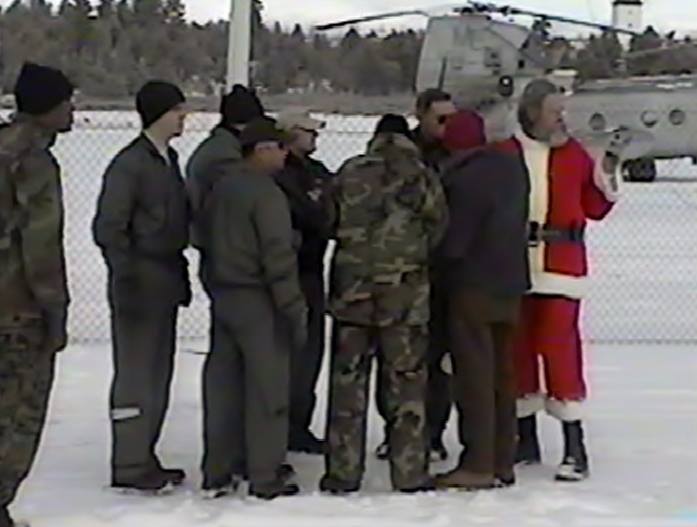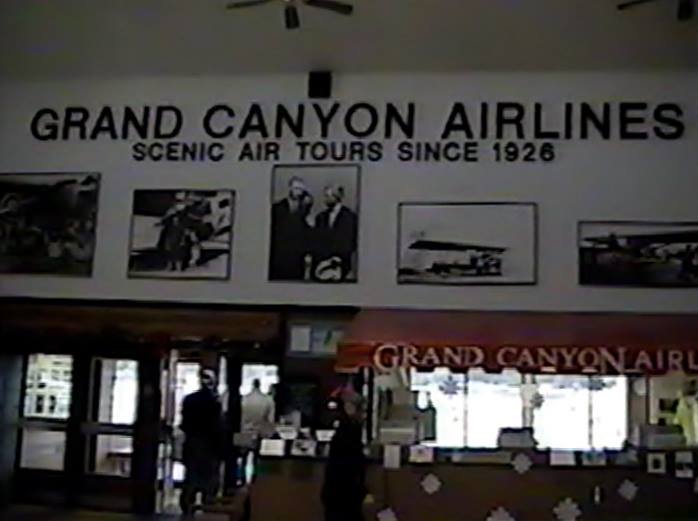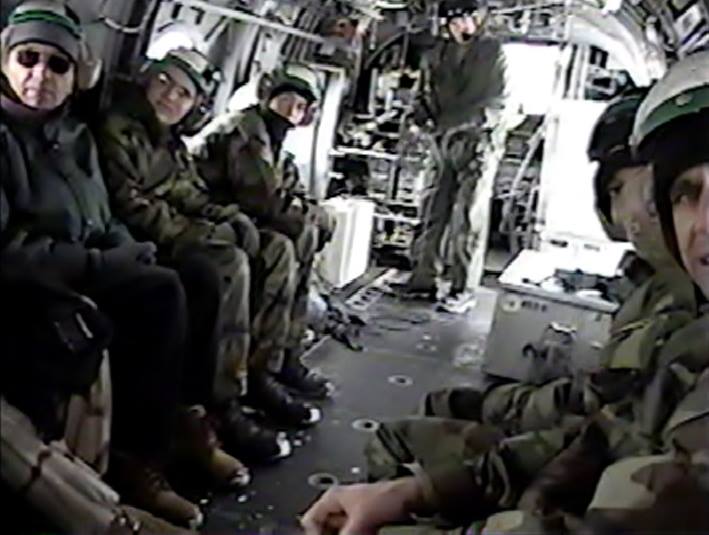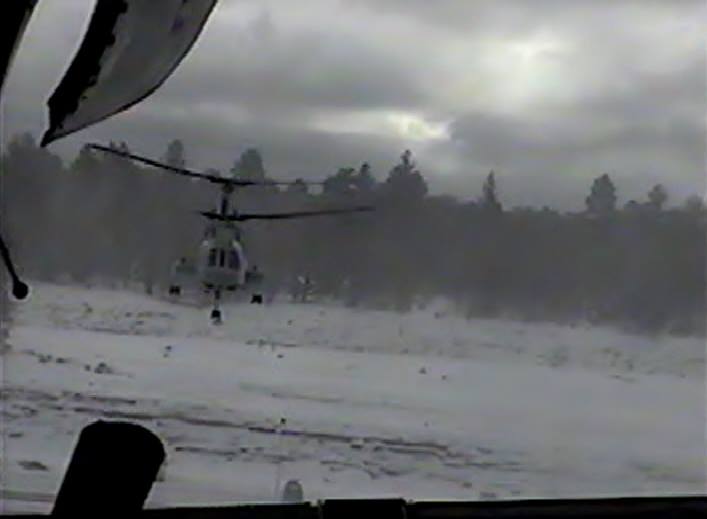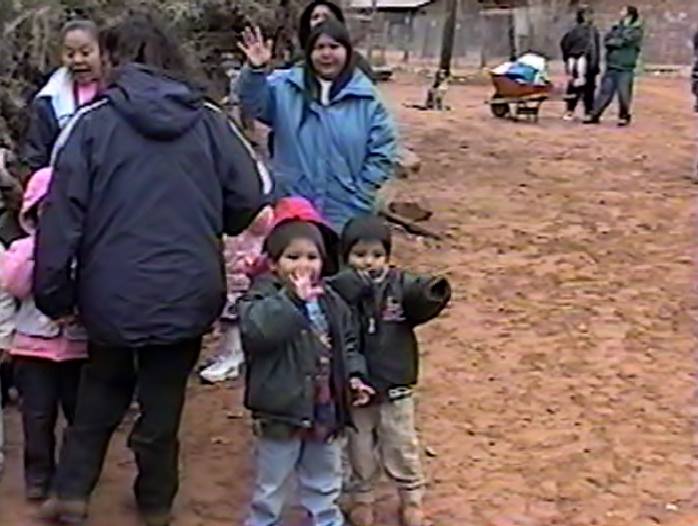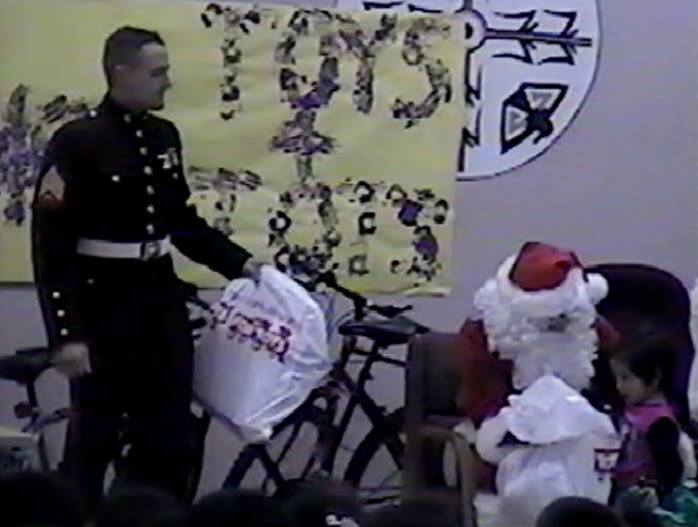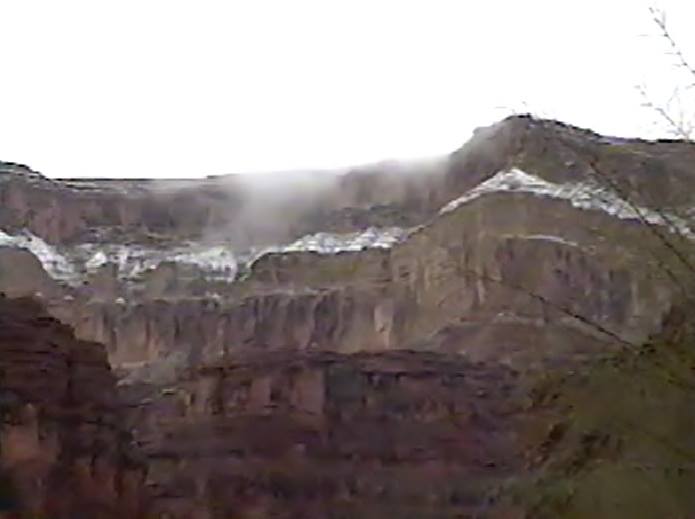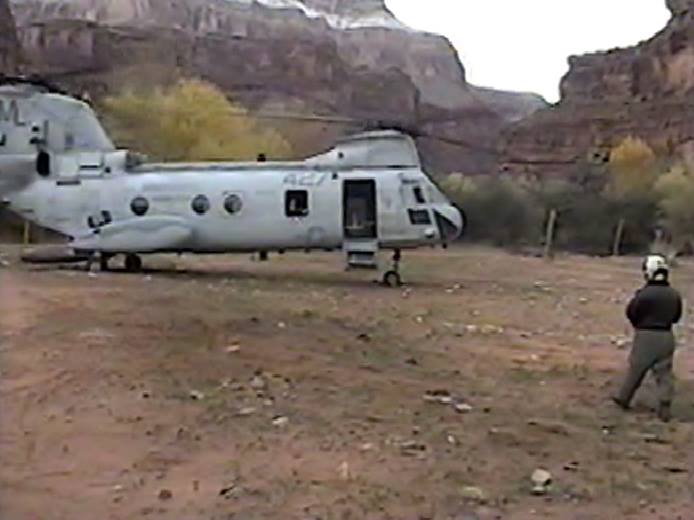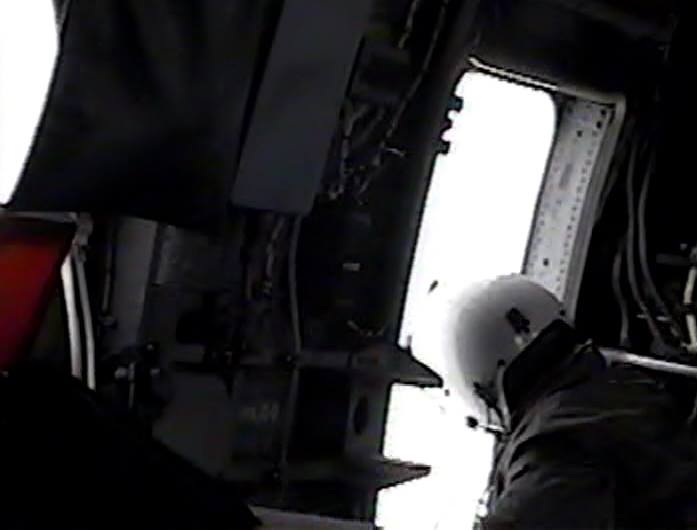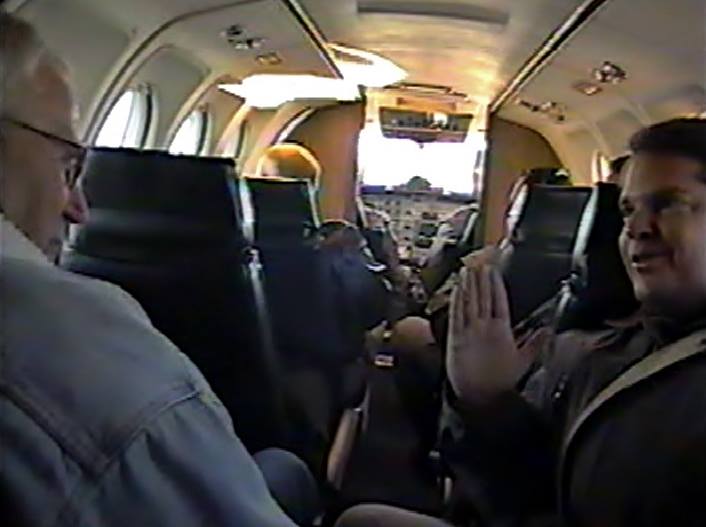“Are we sure we can make it out?”
It was a simple question I overheard several U.S. Marines discussing at the Grand Canyon airport.
My photographer and I had flown with several U.S. Marines from Marine Corps Air Station Yuma to the Grand Canyon that morning as part of the Toys for Tots program.
Our goal—called “Operation Havasupai”—with U.S. Marines from Marine Medium Helicopter Squadron-764 was to make a quick twenty-minute flight from the rim of the Grand Canyon to the bottom in order for Santa to deliver toys to the Supai children.
It was 10 a.m., and the goal was to be back in the air no later than noon.
Sometimes simple plans go haywire.
When we arrived at the Grand Canyon airport, there were several inches of fresh new snow on the runway.
Plows were working to clear the snow as a Marine crew was busy scraping the twin blades of the gigantic Marine CH-46E helicopters.
A small group of Marines were huddled with Hal Jensen, a retired Marine from Flagstaff who had started the Toys for Tots effort in 1995.
Jensen—known affectionately around Northern Arizona as “Head Elf”—had meticulously laid out the agenda for the day.
He appeared to be busy inventing a backup plan—much like a coach with an unexpected opponent—on the spot.
The opponent this day was Mother Nature. It wasn’t snowing hard—as it had overnight—but it was only twelve degrees with dark skies and the possibility of a high layer of clouds in the canyon.
Clouds in the canyon? I thought out loud. These are great combat helicopters but can they fly themselves in between the walls of the freakin’ Grand Canyon?
The mission could not be easily scrapped.
Besides Santa and all those toys, the four helicopters would be carrying more than 16,000 pounds of food and other supplies.
The Havasupai Indian Reservation is one of the most isolated places on the Earth, sitting 2,000 feet below the rim of the Grand Canyon.
Perhaps known best for the stunning Havasu Falls waterfall, the Supai village is accessible only by helicopter, mule, horse, or by an eight-mile hiking trail.
So making a quick run to Home Depot for building supplies or Subway for a quick bite to eat is out of the question for the 450 residents.
It was important to get down there.
“The weather could be better, but we can safely fly and land,” Major Marcus Malais, aviation safety officer at HMM-764, and our pilot, told us. “At no time will there be risk to man or machine.”
So we loaded up and entered the freezing cargo bay.
The plan was for the first two helicopters to leave approximately twenty minutes ahead of the third and fourth.
That final helicopter would have Santa and Mrs. Claus on board. We needed the extra time to set up the toys, and our cameras, before the “big moment” for the kids.
As we strapped in our seats—just a long bench really—Yuma County Supervisor Bob McLendon and I noticed the rear loading ramp of the CH-46 had been left open for the flight.
Any thought of warming up was quickly gone.
We lifted off from Grand Canyon airport and soon Malais was flying us through one of the seven natural wonders of the world.
He gently, like a boat on the sea, rolled us slightly left to right, giving us a great view.
About five minutes into our descent, however, the winds picked up blowing fresh snow off the canyon walls.
Our visibility quickly became limited; in fact I could see the second helicopter following us but nothing behind them.
“Santa is going to have quite a ride,” I said to Bob, who nodded in agreement.
Soon our helicopter landed and we were greeted by over one hundred happy and cheering Supai children.
This was the seventh time the Marines had made the Toys for Tots run, but it still had to be exciting for the kids to see those giant mechanical birds fly in from the sky.
“One little girl came up to me yelling, ‘Santa is here! Santa is here!’” Malais told me after landing. “I asked her, ‘how do you know Santa is here?’ And she said, while giving me a big hug, ‘because the Marines are here!’ How awesome is that?” he said.
The kids had made a big banner, which was hung in the recreation center: “Welcome Toys 4 Tots!” “The children are so excited they can hardly stand it,” Velma Eisenberger, principal at Havasupai Elementary School told reporters.
Here at the bottom of earth’s most famous canyon, I noticed several satellite dishes on the top of homes.
In the technological age, the Havasupai were not as disconnected from the world as you might have thought.
But school board President Roland Manakaja estimated nearly 60 percent of the tribe was unemployed and the supplies from the Toys for Tots run made a big difference.
As we moved into the recreation center, I noticed some excitement from a group of Marines.
I wandered over and one whispered to me, “Too much fog, Santa and Mrs. Claus are stuck above and can’t make it.”
“Santa is stuck because of bad weather?” I shook my head in disbelief.
The man set to play Santa was really good too—I had met him at the airport and noted he had a real beard.
The good news was the toys were here.
The bad news is there was no jolly old elf to hand them out.
But never doubt the magic of the U.S. Marines.
Thirty minutes later a very tall and slender Santa, complete with red suit and bushy white beard, appeared to the delight of the children.
As luck would have it, one of the volunteers had been told earlier in the week that the original Santa may not be able to make it and he had packed his suit in a duffle bag just in case.
“Incredibly, the guy with the suit just happened to overhear our conversation and jumped in to save the day,” Malais told me. “No one, including me, had any idea that Santa #2 would be walking out that day. I was as surprised and bemused as anybody; it truly was Miracle on 34th Street!”
As Santa handed out the presents, I noticed a bit of apprehension on the faces of the pilots.
I followed them outside to see what the worry was all about.
As I looked up, any hint of the sun had been replaced with a dark wall of clouds and fog that was quickly descending into the canyon.
“If we can’t fly out, our only option is to hike out,” one Marine told me.
At that moment we were literally stuck at the bottom of the Grand Canyon!
The clock continued to tick for about two hours until Malais determined the fog did not pose a safety risk.
“Normally, we never fly without a weather briefing and a detailed analysis of the conditions, but that analysis wasn’t available here,” Malais told me.
So the seasoned pilot made the decision to lift out of the Grand Canyon from a self-described trick he had learned from the Supai themselves.
“In years past, I had chatted with the elders many times and the topic of weather came up often,” Malais told me later. “I was taught that when the birds and animals become silent or disappear, the tribes people prepare for rough weather, but as soon as the birds return and begin to sing, the tribespeople return to normal activity. Well, that’s exactly what I did. I listened and watched carefully for the animals and spoke with the elders. Once nature started to come alive and the elders gave me the nod, I stated to my crew that the birds are singing so let’s ‘man up’ and get out of here. Yes, they thought I was bat crazy!”
Crazy? We were taking off from the bottom of the Grand Canyon in thick fog because the birds were singing. That’s not crazy at all.
With the Supai children—many now on their new bikes thanks to the Toys for Tots effort—waving goodbye we took off and soon were in an ocean of clouds.
We were flying in the Grand Canyon and there was zero visibility.
“This was challenging no doubt, and the unknown still lay atop the canyon,” Malais told me. “We use GPS to create a couple of waypoints for guidance, and a GPS point for the Grand Canyon airport. I briefed my other aircrew to stay close and emphasized to all the aircrew that we must maintain visual contact with each other at all times.”
We could have been 300 feet from the canyon wall or an inch and not known.
The strong winds were blowing snow all around us creating a white glow.
Even the Marines on board, the best fighting soldiers on earth, seemed apprehensive.
“Grab a strap and hold tight, this will get bumpy!” shouted one Marine who had positioned himself at the open door in front of the cargo bay.
McLendon looked over at me as if we might be sharing the last few seconds on Earth together.
A longtime high school basketball coach, he had been in some tough games before, but I made a mental note that this one could come down to a lucky three-pointer
After a slow, cold, and frightening half-hour we lifted out of the Grand Canyon.
Despite it being below freezing, I made a mental note that there was sweat on my back.
“My Dashed 2 (the second helicopter) did a beautiful job staying tight, and Mother Nature was gracious enough to continually open a window of opportunity for us to get home safely,” Malais told me. Truth be told, he was a bit relieved to be back on the ground too.
Flying back to Yuma I said to Bob, “What a great event for those kids, and what a great job by the Marines to get us there.”
He nodded and said, “Yes, true, but still we probably don’t want to ever repeat that trip.”
True enough.
I made a decision when we landed at MCAS Yuma; from now on I was leaving military hardware to the military.
That is until months later when I arrived in South Carolina.
Read More in Front Row Seat at the Circus!
